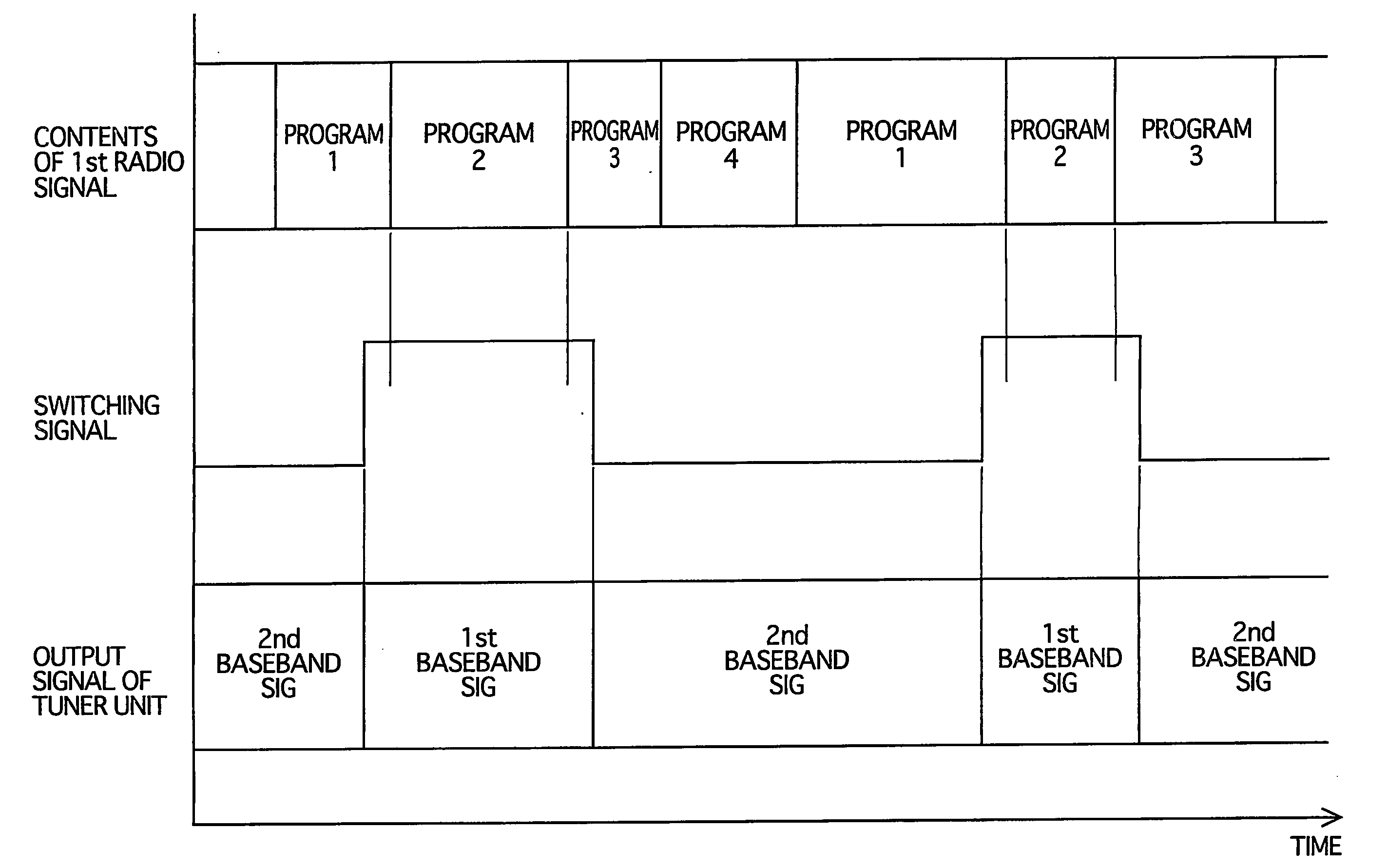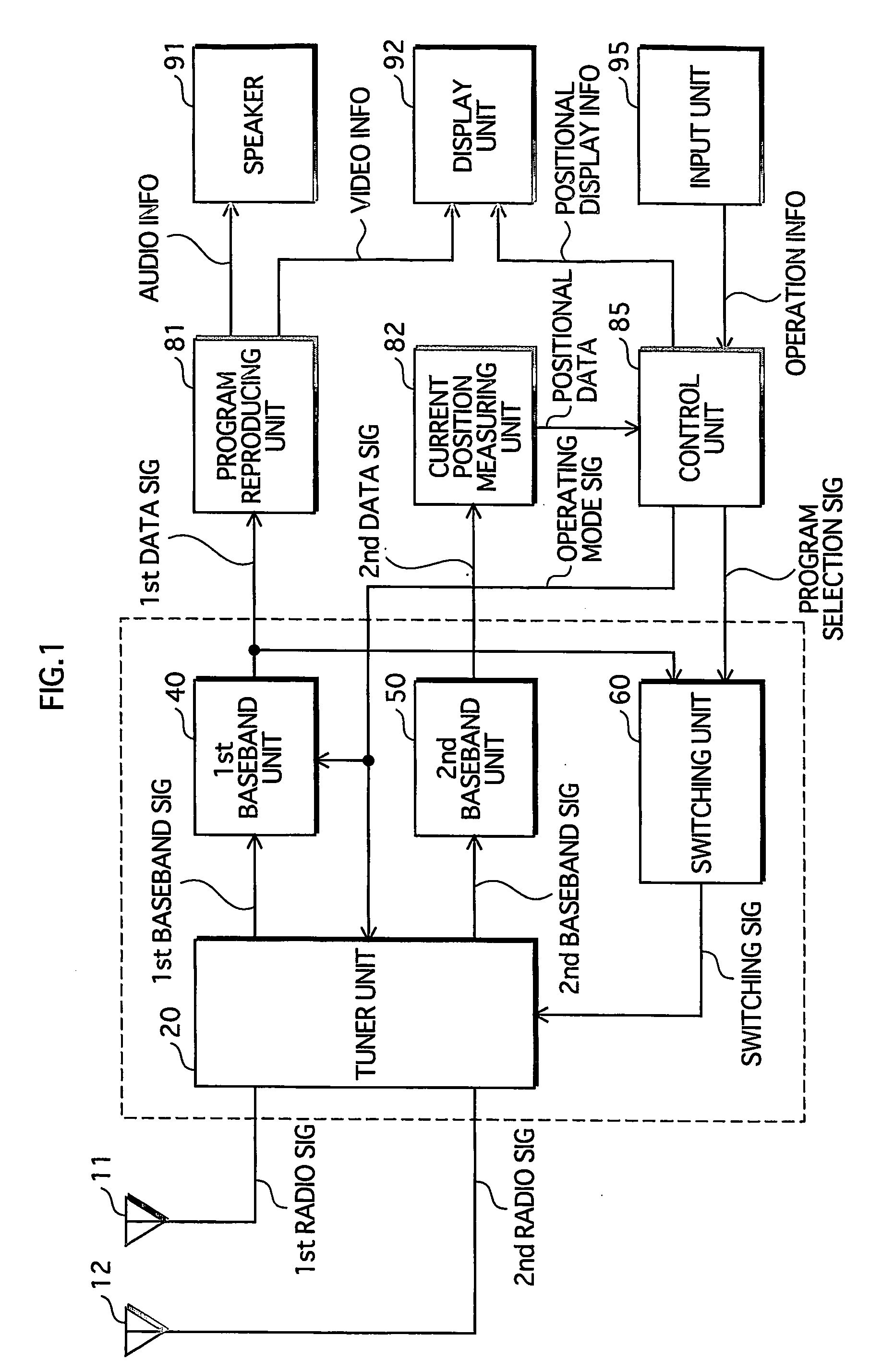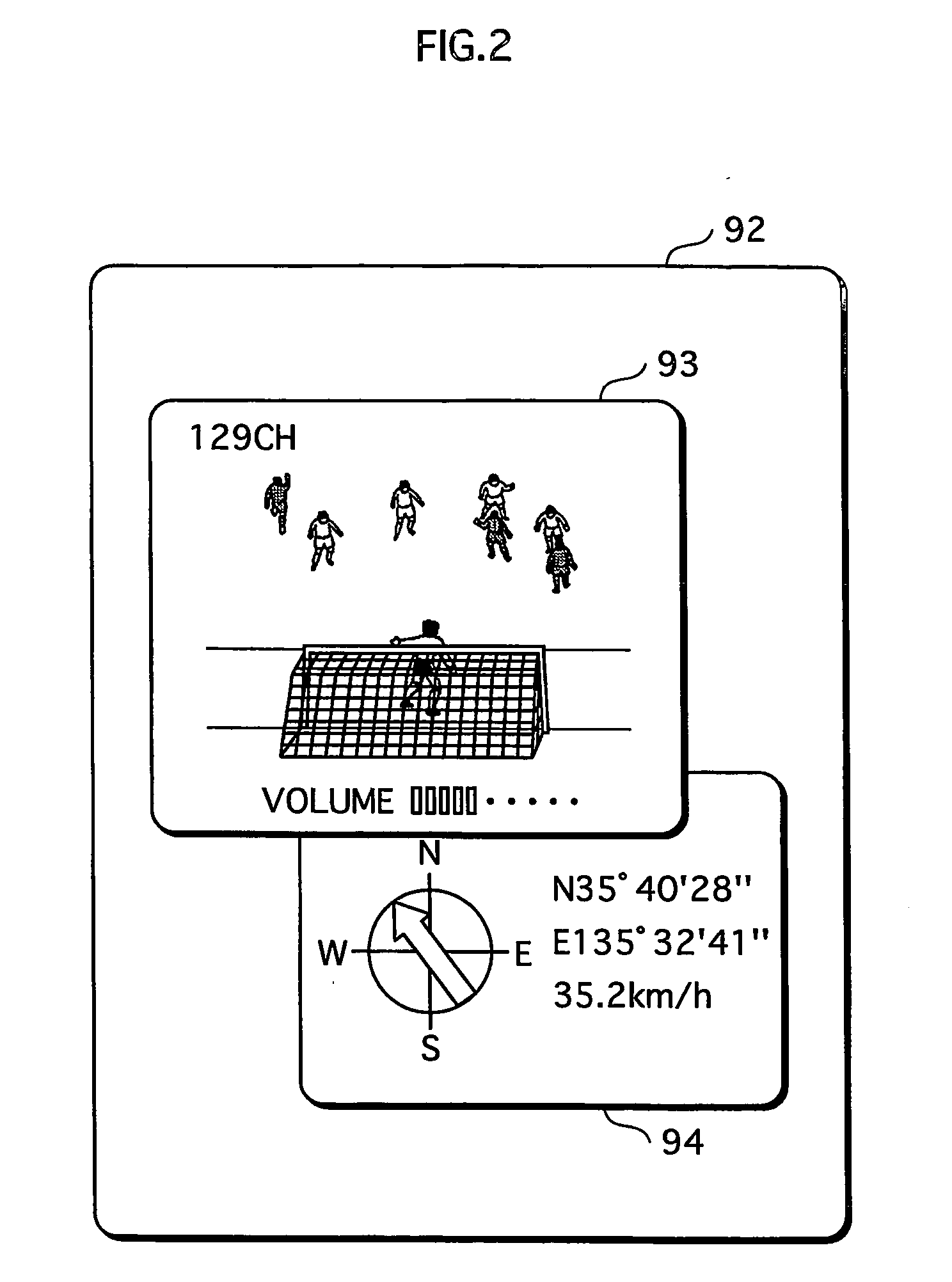Wireless Terminal Device
a terminal device and wireless technology, applied in substation equipment, resource management arrangements, selective content distribution, etc., can solve the problems of over-wireless communication devices, interference impairing noise margins, operating stability, and adjustment of devices, and it is difficult to reduce device siz
- Summary
- Abstract
- Description
- Claims
- Application Information
AI Technical Summary
Benefits of technology
Problems solved by technology
Method used
Image
Examples
embodiment 1
[0048]A wireless terminal device according to an embodiment 1 of the present invention receives a first radio signal relating to a first service which is a broadcasting service, and a second radio signal relating to a second service which is a position measuring service. The first radio signal represents a plurality of time-division multiplexed broadcast programs as well as periods during which the respective programs are represented. In addition to the reception of the signals, the wireless terminal device reproduces one of the programs selected by a user, and also measures its own current position based on the second radio signal.
[0049]The wireless terminal device of this embodiment may be implemented as a portable television receiver, a notebook personal computer, a mobile phone, or a PDA.
(Overall Structure)
[0050]FIG. 1 is a functional block diagram showing the overall structure of the wireless terminal device of the embodiment 1.
[0051]A first antenna 11 selectively receives the ...
embodiment 2
[0084]An embodiment 2 differs from the embodiment 1 in that a wireless terminal device of the present embodiment is adapted for the second service which is a bidirectional communication service as well as for the first service mentioned above.
[0085]Examples of the second service that the wireless terminal device of the present embodiment handles include a wireless Internet access service (of which access points are known as hotspots), a wireless LAN (Local Area Network), and remote control of home appliances. Further, examples of information that is displayed relating to the second service along with the selected program include a Website, another program that is broadcast via the Internet separately from the program of the first service, the states of the home appliances controlled.
[0086]Hereinafter, description is given mainly to the differences from the embodiment 1.
(Overall Structure)
[0087]FIG. 6 is a functional block diagram showing the overall structure of a wireless terminal ...
embodiment 3
[0095]A wireless terminal device of an embodiment 3 is different from that of the embodiment 1 in the detailed structure of the tuner unit 20.
[0096]Hereinafter, description is given mainly to the difference from the embodiment 1.
(Detailed Structure of Main Part)
[0097]FIG. 7 is a functional block diagram showing the detailed structure of a main part of the wireless terminal device according to the embodiment 3. Different from the main part of the embodiment 1, the main part of the present embodiment includes a tuner unit 35 that is composed of two circuitry blocks of a first tuner 36 and a second tuner 37. Further, a power-saving control unit 65 is additionally included for controlling power supply.
[0098]The first tuner 36 and the second tuner 37 are separately provided with a local oscillator and a frequency converter. The first tuner 36 frequency converts the first radio signal to the first baseband signal, and the second tuner 37 frequency converts the second radio signal to the s...
PUM
 Login to View More
Login to View More Abstract
Description
Claims
Application Information
 Login to View More
Login to View More - R&D
- Intellectual Property
- Life Sciences
- Materials
- Tech Scout
- Unparalleled Data Quality
- Higher Quality Content
- 60% Fewer Hallucinations
Browse by: Latest US Patents, China's latest patents, Technical Efficacy Thesaurus, Application Domain, Technology Topic, Popular Technical Reports.
© 2025 PatSnap. All rights reserved.Legal|Privacy policy|Modern Slavery Act Transparency Statement|Sitemap|About US| Contact US: help@patsnap.com



